The new baby boom
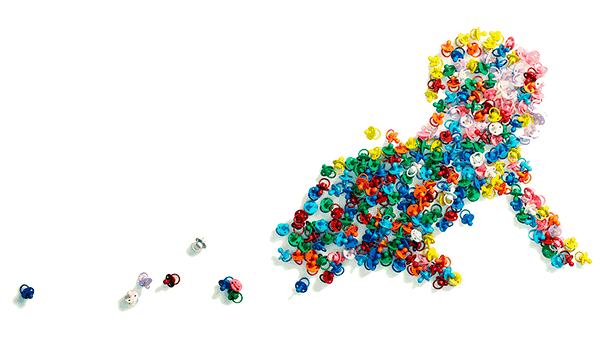
Roula Khalaf, Editor of the FT, selects her favourite stories in this weekly newsletter.
The grey tower blocks that wrap around the Gascoigne Children’s Centre in Barking, east London, are in various forms of disrepair. Demolition jobs stand unfinished; cross sections of smashed homes reveal pastel wallpaper flapping in the wind. Families from more than 80 countries live in the remaining houses. Gascoigne is the last stop for many people who have been shunted around the UK’s social housing stock. It is also the focus of a demographic earthquake transforming Britain.
Ma Sizhuo, 21 months, Nanjing, China
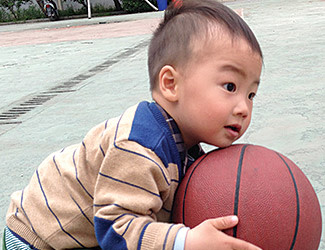
What does your family call you? Dudu
Siblings I’m an only child but my parents want to give me a baby sister some day; luckily, the one-child policy has changed to allow them to have two kids.
What’s your favourite toy? Cars, all kinds of cars, especially the kind with lights on top, like police cars and ambulances.
What age did you start solids? 12 months.
When do you like to get up in the morning? I get up whenever Mummy gets up (lucky Mummy).
When do your parents like you to get up? They like sleeping late so they just hope I will sleep as long as possible.
How many toys do you have? One, two, three … 10, dozens!
How many other babies do you know? Three.
What’s your favourite food to throw around? Steamed buns.
What are your thoughts on the childcare options in your country? I’m lucky to live in China, where grandparents are often around to care for us only children. I prefer it when Mummy is at home but when she’s at work my popo (my mother’s mum) looks after me.
How many people live in your house? I have six adults to wait on my every need: my mum and dad, and their mums and dads – we all live together in our house.
Routine or free-for-all? My mum believes babies need a firmly structured life.
Co-sleeper or solo slumberer? I sleep with Mummy.
Patti Waldmeir (additional reporting by Zhang Yan in Shanghai)
There are more babies per person in Barking and Dagenham than in any other local authority in Britain. One in 10 people in the area is under five and the local pre-school is thrice oversubscribed. Lunch “hour” at the packed primary school runs from 11am to 1.30pm.
Inside the children’s centre, high-pitched wails ricochet off the walls. After 20 years working on the estate, Rahat Ismail, the centre’s manager, is used to the noise. Showing me into a quieter room, she sits down on a carpet beside nine mothers and nine babies. It is time for Babbling Babes, a singing session designed to help infants with their cognitive skills.
A 15-month-old boy with a wispy afro is asked to pick from two plastic figures, each representing a song. Handling objects improves motor development and, at this boy’s age, a baby begins to see that others’ experiences are different from his own. Glancing at his peers, the boy rejects a farmer by the name of MacDonald and opts for a black sheep. We sing, inquiring as to its wool.
When Ismail was growing up in Barking in the 1970s, Gascoigne was white and working class.
Four decades later, these babies consist of one white Briton, two black Britons, four east Europeans, one west African and one Iraqi. White British mothers are the most reluctant to attend. “I understand how it feels to be in a minority,” Ismail says, “but babies don’t see that; they see each other as mates who want to play together.” Turning to the nine babies, she declares: “This is the face of modern Britain.” They are also the face of the UK’s latest – and most diverse – baby boom.
At the start of the 20th century, the future of the British Empire lay in the podgy hands of babies. The government was worried that the prolonged Boer war reflected a nation physically incapable of maintaining its role in the world. In response, the Inter-departmental Committee on Physical Deterioration (1904) proposed that medical inspections and free meals for children should be introduced in schools – and it recommended training in “mothercraft” for parents of poor children. Then, as now, there was a palpable obsession with infants, their development and what it says about Britain.
Today, the increase in British birth rates has ushered in another baby-centric age, one defined by three distinct aspects. More babies of different ethnicities are being born, challenging the very notion of an ethnic “minority”. They are also part of a simultaneous parenting boom: people from an ever wider array of backgrounds can become parents of healthy babies. Finally, there is an intellectual boom: as scientists and policy makers – like their political forebears – seek to use our growing knowledge about how babies and their brains develop to improve education and curb inequality.
Abraham Pérez Hernández, 2 months, Mexico City, Mexico
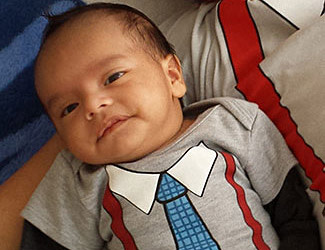
Siblings None.
What’s your favourite toy? I don’t really have one yet. But I like listening to all the different sounds and trying to find where they come from.
What age did you start solids? I don’t yet. I still drink milk. I have formula milk, in a bottle, and I like it when anyone gives it to me. It doesn’t have to be Mum or Dad.
How many toys do you have? Lots. Everyone in my family gave me lots of presents when I was born.
How many other babies do you know? I see my cousin three times a week. She’s nearly the same age as me.
What’s your favourite food to throw around? I haven’t started that yet. But it’s fun to vomit on people sometimes.
What do you think about childcare options in your country? Mummy works for Pemex, the state oil company, and they have a crèche. She has to go back to work now and my auntie is going to look after me. When I’m one, I’ll go to the Pemex nursery; my parents think I’m still too little to go.
How many people live in your house? Three.
Routine or free-for-all? Free-for-all. Mummy works from 7am to 2pm and can take three days off a month to play with me. Daddy has a café in town and sometimes he can stay at home too.
Disposable or reusable nappies? Disposable.
Co-sleeper or solo slumberer? I go to bed in my cot, which is next to Mummy and Daddy’s bed, but when I wake up they let me get into bed with them. Daddy says the bedroom is a bit chilly, so I lie between them to keep warm. They don’t sleep very much then – they’re afraid of squashing me.
Jude Webber
In 2001, the number of births in England and Wales hit a 25-year low of 595,000. In 2012, there were 730,000, a 22 per cent increase. The data defy predictions made by economists that the financial crisis would cause the number of births and total fertility rates to fall, as has indeed been the case in other parts of the European Union.
New immigrants are part of the explanation; two-thirds of Gascoigne parents are from overseas. More broadly, the number of children born to mothers who were themselves born outside the UK increased from 98,000 to 189,000 between 2001 and 2012. In that year, one-quarter of children (25.9 per cent) born in the UK had foreign mothers. In London, the figure was more than half.
But British-born mothers are also having more children than at any time since the early 1970s. Many second-generation migrants are reaching parenting age. At the same time, more women are giving birth in their mid-to-late thirties and forties. Areas such as London’s Hackney, Tower Hamlets and Lambeth exemplify these trends; their populations have been increased by second-generation African, Asian and, in Hackney’s case, Hasidic Jewish mothers in their early twenties, as well as an influx of white young professionals, who have children later.
The diversity of Barking’s Babbling Babes is becoming more and more common across Britain’s urban areas. By 2030, approximately one-third of Britons will be from ethnic minorities, according to Policy Exchange, a think-tank. By then the notion of homogenous ethnic minorities may have disappeared. Six per cent of children under five are of mixed ethnicity, on a par with the equivalent figure in the US, that country of migrants. Official data suggest that about one-quarter of British children born to Polish mothers have non-Polish fathers. Ismail says she regularly sees mothers from eastern Europe with their partners from Ghana and Nigeria.
The onslaught of cherubs is everywhere, from the media to the high street. Witness the gushing over Prince George or, more prosaically, the popularity of the television programmes One Born Every Minute, a reality show based in delivery wards, and Call the Midwife, a drama set in the 1950s. Parents now spend an average of £11,205 on a child in the first year of its life, a figure growing at a faster rate than at any other age. The amount of time spent by working mothers and fathers on dedicated childcare has roughly quadrupled since the early 1970s, according to researchers at Oxford university. Meanwhile politicians make endless promises to “the next generation” and their vote-wielding mums and dads.
These parents are themselves becoming more diverse. Social changes coupled with technological advances are allowing people to become mothers and fathers who might never have thought it possible. From greater options for gay parents to new fertility treatments and genetic techniques, there is a boom in parenting as well.
Noel is a 39-year-old French investment banker who has lived in London for eight years. He knew he wanted to be a father before he knew he was gay. When he came out at 18, his parents went through what he calls “mourning”. “My mother was devastated,” Noel says. “She had to mourn the kid she thought she knew and she had to mourn the fact that she wouldn’t be a grandparent.”
Or so she thought. But since 2008, same-sex couples have been able to apply for parental orders, which give them legal rights over the protection of a child. Surrogacy has therefore become a more viable option for men such as Noel and his partner David. Figures from the Children and Family Court Advisory and Support Service show that 167 babies were registered with parental orders in 2013, compared with 47 in 2007.
Flora, 2 years,
Milan, Italy
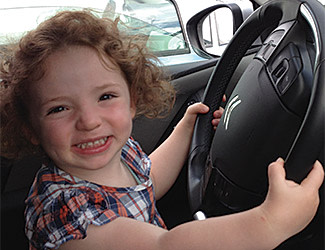
Siblings None.
What’s your favourite toy? My Peppa Pig floor puzzle.
What age did you start solids? Five months.
When do you like to get up in the morning? 6.30am.
When do your parents like you to get up? Half an hour later than I do!
How many toys do you have? 10.
How many other babies do you know? I have 26 nursery playmates.
What’s your favourite food to throw around? Pennette pasta with ragu. Mealtimes are a major event at my nursery – we get stuff like Parmesan risotto, minestrone soup and grilled plaice with puréed carrots and potatoes. And fruit and bread, of course!
How many people live in your house? Three.
Routine or free-for-all? Routine.
Disposable or reusable nappies? Disposable.
Co-sleeper or solo slumberer? Mostly solo.
Rachel Sanderson
In 2012, Noel and David met with a US surrogacy agency – a popular option for gay fathers. While adoption was a possibility, Noel “wanted a biological relation. I know some people think it’s selfish but that biological link is something that matters to both of us.” Surrogacy is not cheap: intended parents can expect to pay between $100,000 and $150,000. Choosing a donor and a surrogate was “like match.com”, Noel recalls. He and David chose a 23-year-old donor with brown hair and eyes who likes riding and whose profile matched his ideal of a “warm, outgoing, outdoorsy family”. It took more than a year to identify her and to find a surrogate, an “incredibly altruistic” 32-year-old.
In early 2014, Noel and David flew to a fertility clinic, each fertilising four eggs. Two embryos, one via each of them, were transferred to the surrogate on Valentine’s day. When I spoke to Noel in June, the trio had been pregnant for 19 weeks. He and David send daily messages to the surrogate via WhatsApp. David’s embryo did not survive but Noel’s did and the couple plans to use some of the six remaining ones at a later date. In September they will travel to the US to take delivery of their baby.
In Britain changes to laws governing adoption and NHS-funded in-vitro fertilisation clinics have also led to more same-sex parents. Two hundred and sixty same-sex couples adopted in the year prior to March 2013, an increase of 100 over the previous 12 months. Women in same-sex relationships began 766 IVF cycles in 2012, a 36 per cent increase on 2011, and a further 1,271 women used artificial insemination, up 20 per cent, according to data from the Human Fertilisation and Embryology Authority (HFEA). The number of same-sex parents may remain small but, as Noel says, there is now a generation of young gay people who know they have the option.
Noel and David are not the only ones seizing new opportunities. In her twenties Fiona was busy exploring the world, working on animal conservation projects. “I made no connection between a choice of a career, and any implication this may have on having a family down the line,” she says. “I believed I would have it all in my twenties.”
Twenty-eight and working in Costa Rica, she found out she was pregnant. She was taking antimalarial medicine and had been vaccinated for polio. On her return to the UK a doctor told her that these might put the baby at risk. Unsure in any case whether she wanted to keep the pregnancy, she opted for an abortion. “I hadn’t been upset before I went in theatre,” she recalls, “I was resolute that this was exactly the right decision.” Waking after sedation, Fiona realised that she was crying. “It wasn’t from the pain. We think we know what we want but our bodies are actually pretty powerful. And clearly, on some level, I wanted to be a mum.”
Bhavy Dogra, 16 months, New Delhi, India
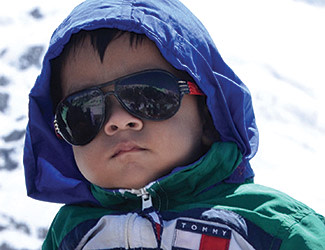
Siblings One brother – he’s six.
What’s your favourite toy? My football.
What age did you start solids? Six months.
When do you like to get up in the morning? Nine or 10am.
When do your parents like you to get up? Seven or 8am.
How many toys do you have? Five or six.
How many other babies do you know? So many. Where we live, houses are very close together, and our neighbours have lots of babies.
What’s your favourite food to throw around? Rice.
How many people live in your house? Nine – me, my brother, parents, grandparents, uncle, aunt and cousin.
Routine or free-for-all? I have a routine for eating but no fixed time for sleeping.
Disposable or reusable nappies? During the day, I have cloth ones but at night it’s Pampers.
Co-sleeper or solo slumber? Co-sleeper, with my mother.
Amy Kazmin
In her thirties, Fiona’s priority was managing her career. By the time she turned 40, she found herself appealing to younger men keen on no-strings-attached sex; the older men she dated were not keen on having children. She found it hard to concentrate on any one aspect of her life. “Everything was screaming that time was running out.”
So, about a year ago, at the age of 41, Fiona spent £10,000 to freeze a dozen of her eggs through a process called vitrification. Early evidence suggests that eggs thawed after this new method of freezing stand a better chance of success than those frozen using previous, less sophisticated techniques.
The HFEA doesn’t publish data on the number of vitrification cases but a spokesperson says it is “growing rapidly from a small base”. Dr Geeta Nargund, a doctor at the Create Fertility clinic, says that this is “another stage in female emancipation”. “Rather than having to decide whether it is career or baby,” she adds, “women are getting a step closer to having it all.”
Fiona would still have to undergo IVF, which is far from a guaranteed way of becoming pregnant. Lord Robert Winston, the doyen of fertility doctors, tells me that despite its popularity (2.2 per cent of babies in the UK were born via IVF in 2011, up from 0.3 per cent in 1992) IVF’s success rates remain low, at about 25 per cent. Lord Winston criticises many clinics for what he considers to be a lack of progress. They make IVF “look like a form of cookery”, he says.
Nevertheless, Fiona feels that vitrification has allowed her to retake control of her life. It has given her time to focus on her career and to buy a house. She only wishes she had done it sooner. “Vitrification lifts the pressure but it is still quite real.”
More choice over when to have a baby is only one way in which options are opening up for potential parents. At the extreme, there are the treatments carried out by Dr Jeffrey Steinberg in his clinics in the US and Mexico. Every year, dozens of British parents cross the ocean for “family balancing”, the euphemistic name for selecting the sex of an embryo prior to its implantation, a practice illegal in the UK. “When the mum writes me an email, I know they want a girl,” Steinberg says. “When it’s dad, it’s going to be a boy.” He has overseen 8,000 cases of family balancing, estimating that marginally more than half wanted a boy. (China used to skew the ratio but the relaxation of the one-child policy has brought in rich Chinese trying to make sure they have a girl. UK parents “are about 50-50”.)
Savannah Nkunini Kabuya, 17 months, Nairobi, Kenya
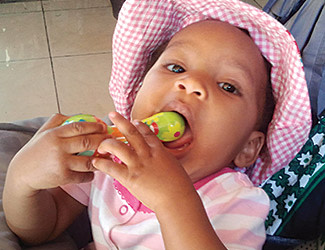
What does your family call you? Kuni – “firewood” in Swahili.
Siblings None.
What’s your favourite toy? I’ve got loads of expensive toys but I like to play with a cup and spoon, or sometimes Mama just turns on the garden tap and I do my thing until I’m soaked.
What age did you start solids? Six months. My first real food was mashed-up pumpkin.
When do you like to get up in the morning? I’m a real sleeper; about 9am.
When do your parents like you to get up? Mama’s a pharmacist in a psychiatric hospital and works afternoon shifts until 8pm. She likes to sleep in too so 9am works brilliantly. After that if she’s still asleep I just poke her in the eyes until she wakes up.
What’s your favourite food to throw around? Bananas – I like mashing them about everywhere.
What are your thoughts on the childcare options in your country? I’m lucky to live in Africa. Mama says it’s a blessing because I live with her, my aunt, my grandmother and her sister, plus Sheila, my live-in nanny, and Rose, who cleans and cooks.
Katrina Manson
But in reality, selecting the gender of their baby is far from the minds of most parents waiting for advances in genetic research. They are simply hoping that their babies do not die in infancy. Pre-implantation genetic diagnosis (PGD) has allowed fertility doctors to identify embryos carrying single gene defects for more than a decade. New screening of “digital” babies, where intended parents’ DNA is used to create virtual profiles of their likely baby’s genome before creating an embryo, will soon augment that approach. And now a technique developed at Newcastle University has opened up another new front in the fight against genetic disease.
Our mitochondria, the power stations of our cells, contain maternal DNA that, if faulty, can lead to diseases such as muscular dystrophy. “Mitochondrial donation”, developed by Newcastle’s Professor Doug Turnbull, can replace this DNA with that of a donor’s. Last month, the HFEA recommended that the technique was safe enough to be used as part of IVF. It falls to parliament to vote on its legalisation. The UK could soon be the first country to introduce a procedure that would mean up to 200 babies a year are born without these devastating diseases.
For Rachel Kean, a 25-year-old with a family history of MELAS, a mitochondrial disease, the new technique means that “a huge psychological burden” may be about to be lifted. She was 21, halfway though her studies at Cambridge university, when she found out about her family’s genetics. Her aunt had just died; she had lived “a very cruel life” and died of multiple-organ failure. Knowing that she may pass on the disease to any future children has meant that Rachel “would find it very hard to bring a child into this world that would have a very cruel, a very short life”. Mitochondrial donation offers her “reproductive choice” and “the potential for a healthy genetic relationship with my future children”.
Another revolution can be found on the floor of a nurse’s office in Telford, a town in the West Midlands. Riley is 14 weeks old. His face is focused on his feet; the brown-eyed, brown-haired boy is revelling in the struggle between frustration and curiosity, knowing he has toes but slowly realising he cannot touch them. Gazing down at him is Mel, 16, his mother. She is part of a trial of the Family Nurse Partnership, an experiment in transforming the lives of more than 10,000 of Britain’s babies and an example of how our growing insight into baby development is being put into action.
Isabel, 6 months,
New York, US
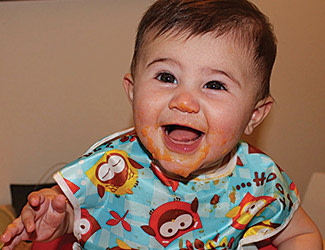
Siblings None… yet!
What’s your favourite toy? Anything that’s not a toy! My latest obsessions are grass, the wheels of my stroller and Daddy’s shoes.
What age did you start solids? Five months.
When do you like to get up in the morning? Between 7.30 and 8am. My mommy and daddy have trained me well.
When do your parents like you to get up? Daddy would like to sleep later if he could but Mommy and I make sure that never happens.
How many toys do you have? Too many for our small apartment.
How many other babies do you know? I have lots of baby friends already – at least 20, thanks to Mommy’s moms’ group.
What’s your favourite food to throw around? Sweet potatoes.
What are your thoughts on the childcare options in your country? I hear it’s expensive! But I love my nanny.
How many people live in your house? Three.
Routine or free-for-all? Definitely routine.
Disposable nappies or reusable ones? Disposable.
Co-sleeper or solo slumberer? Solo.
Camilla Hall
Mel met Ryan, Riley’s father, on Facebook and found out she was pregnant during the middle of her GCSEs; she didn’t go to the school prom for fear of being mocked for her bump. Her mother left Telford to live with a new partner soon after, leaving Mel in temporary, emergency accommodation in a dark damp flat. She left school after her final exams and is currently receiving income support.
Mel is still with Ryan, who she says is a “brilliant” father, and has already gone back to college, where she is studying for a qualification in beauty therapy. “A lot of the trouble is when you say, ‘Oh, she’s 16 and pregnant’, you have your opinion straightaway”, Mel says. “I’ve had to grow up a lot quicker than a lot of people have.” She speaks quickly; her clothes are simple and hip, a bun and white Converse shoes top and tail black leggings and a grey jumper.
“Riley”, Mel says, “will be like any normal child in any other family, no matter the age of the mother. He is going to grow up the way any other child will grow up.”
That – if not more – is the ambition of the Family Nurse Partnership. FNP pairs young expectant mothers with a dedicated nurse who helps them prepare for the birth and, once the baby is born, boost its social, emotional and cognitive development. Evidence from the US, where a version has been running for four decades, suggests that FNP babies do better in education and earn more in later life than similar babies who did not go through the programme. Mothers have better outcomes too. A randomised controlled trial is now being run in the UK.
FNP is the emblematic policy of the “early intervention” movement, whose advocates believe schemes to promote development in the first years of life can transform babies’ future outcomes and narrow inequality. This is an intellectual shift as dramatic as the demographic one sweeping Britain. Campaigners argue that the first months are critical for various aspects of brain development – both cognitive and non-cognitive. They call for much higher spending on baby-focused policies. Act early, the argument goes; if you don’t, then the baby’s future is all but set.
All revolutions have their motifs. For politicians and policy makers who advocate early intervention, it is a picture of two brain scans found on the front of the government’s strategy document on early years policies. On the left is a plump healthy brain. On the right is a shrivelled and scarred one. The latter is taken from a study of “extreme neglect”. The implication is that insufficient attention is the cause of subsequent poor life outcomes. This “determinism” has been criticised by some scholars but the idea that future success can be influenced at very early ages has a strong evidential foundation.
Lynne Murray, professor of developmental psychology at the University of Reading, has been studying babies for more than three decades. She perhaps knows more about how they see the world than any adult in Britain today. “Through the last 40 years, the overarching theme in descriptions of good parenting has been that of ‘sensitivity,’” she writes in her new book The Psychology of Babies. Attachment theory, for years the dominant paradigm in baby research, is concerned with the importance of building a secure emotional relationship between infants and their carers.
Attachment matters. But it is not the only thing that influences a baby’s future. As Murray explains, different aspects of parenting don’t necessarily overlap. There are different “domains” of development, each of which requires subtly different relationships. “I have seen mothers very good at reading picture books or doing jigsaws but who are very bad at dealing with temper tantrums.” Secure attachments as a baby are related to fewer emotional problems in later life – but they have no observable impact on an aspect such as IQ, Murray says.
Murray’s research is based on psychological studies. But provisional evidence from neuroscience supports her descriptions. Emily Jones, a neuroscientist at Birkbeck College, University of London, says that the understanding of how babies’ brains develop has shifted. To use a computing analogy: our subject of understanding is moving from hardware to software. A decade or so ago, it was thought that the reason humans cannot remember much from their life below the age of three is because the hippocampus “only started working when we are three”.
Today, it is thought that babies’ brains begin at an advanced point. At birth, they contain 10 trillion synapses, according to the Center on the Developing Child at Harvard University. A baby is born with “a lot of competencies”, Jones says; studies show that they can recognise the voice of a mother (or other carer) from birth, and quickly connect that to her face. What happens next is that clusters of neurons that are not being stimulated “fall away”, while those that are can grow and become more sensitive.
There is rapid “pruning” of neural networks throughout a baby’s life. An example of this process can be seen in how babies learn different languages. Chinese adults struggle to discriminate between the sounds of the letters R and L. But Chinese babies and infants are able to do so. Jones says this is a case of “progressive specialisation”: without the stimulation that comes from hearing Rs and Ls, the brain “concludes from experience that it doesn’t need them”.
A similar process can be found across a range of experiences, Murray says. In a series of videos of newborns and their parents, she demonstrates one of the more amazing things about babies: how they can imitate another person’s expressions without ever having seen their own face before. How, for example, is a baby able to stick its tongue out when it sees its father doing this?
Research suggests that the sight of someone performing such an action stimulates the same area of the brain that is activated when that action is performed. These areas are being primed for “neurological readiness”, says Murray. The pattern also applies for expressions of emotion. “The mirror neuron system provides, then, a fundamental basis for connecting other people’s experience to our own, and for our feelings of empathy,” she writes.
As part of the FNP programme, which takes its cue from the literature on childhood psychology and brain development, Mel was encouraged to form an antenatal bond with Riley. During the sessions, Mel began keeping a diary in which she visualised Riley – she saw dark eyes and lots of hair – and she and Ryan spoke to the bump. This may sound simple, but the FNP programme says that helping Mel and her peers to anticipate the birth is critical to bonding when the baby is born.
At their weekly meetings after the birth, Mel and Riley completed basic health checks while working on bonding and play to speed motor and brain development. Mel is told the importance of speaking to Riley; some researchers say that there could be a gap approaching 30 million in the number of words heard spoken at home between rich and poor children by age four. Riley is subject to regular tests on his cognitive development.
The UK experience of FNP is as yet unproven. But Rachel, Mel’s nurse, says she can see it working. “Riley is a perfect example. He interacts really well. He communicates really well with his parents. He’s very sociable. He’s healthy. Developmentally, mentally, he’s probably streets ahead of most of the babies at his age.” I ask whether this is more down to Mel’s inherent qualities as a parent, rather than anything she’s learnt from the programme. “That’s part of Mel and Ryan being a fantastic mum and dad” but it’s “also all of the help and information we’ve given them from the beginning.”
Some names have been changed.
John McDermott is an FT commentator.
Still life by Felicity McCabe
This article has been amended to reflect the fact that official data suggest that about one-quarter of British children born to Polish mothers have non-Polish fathers and not, as stated, African fathers.
Comments